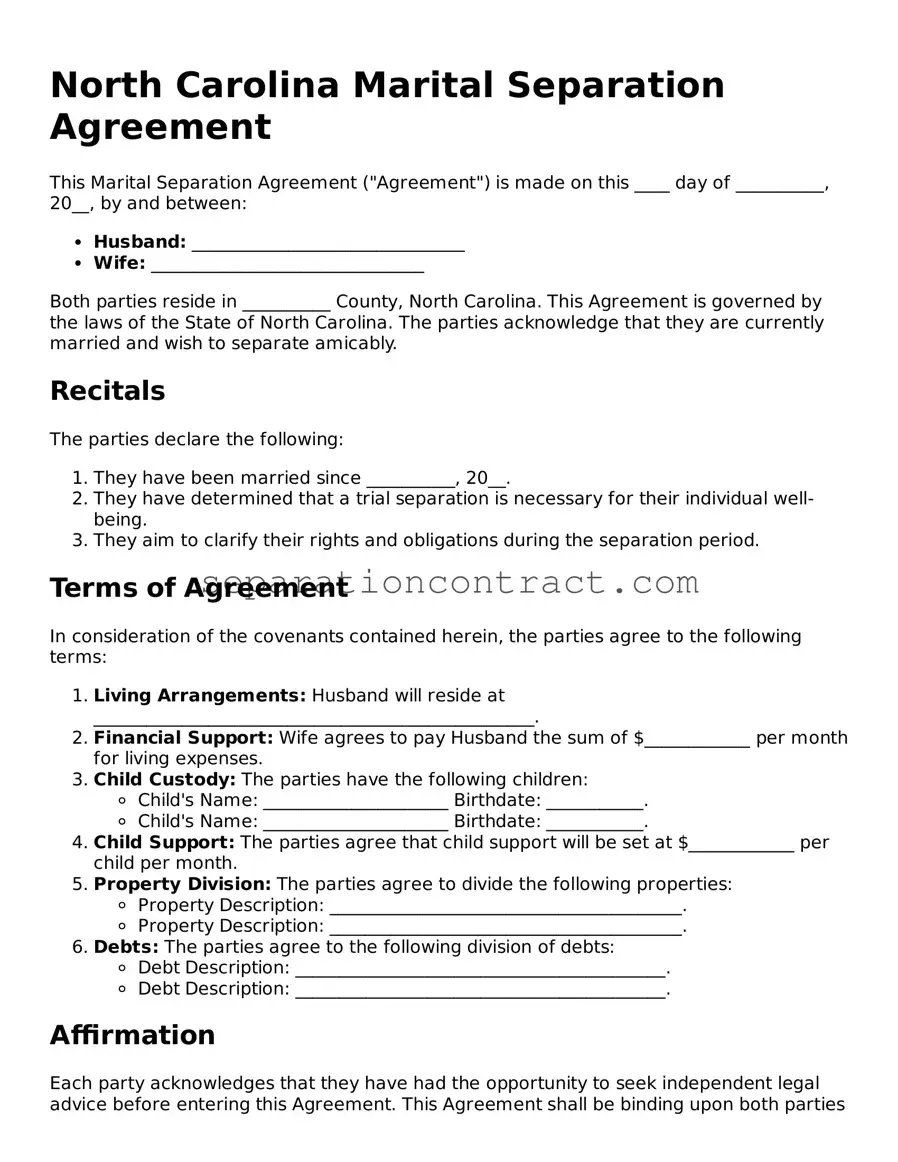Filling out the North Carolina Marital Separation Agreement form can be a daunting task. Many individuals make common mistakes that can lead to confusion or even legal complications. One frequent error is failing to include all necessary personal information. This includes not only the names of both parties but also their current addresses. Omitting this information can create issues with service and notifications.
Another mistake is neglecting to specify the date of separation. This date is crucial as it marks the beginning of the separation period. Without it, disputes may arise regarding property division or support obligations. Additionally, some people forget to clarify the terms of property division. Clearly outlining who gets what helps prevent future misunderstandings.
People often overlook the importance of detailing financial responsibilities. This includes debts and liabilities, which should be explicitly addressed in the agreement. Failing to mention these can lead to one party being unfairly burdened with debts that should have been shared or divided.
Many individuals also make the mistake of not addressing child custody and support arrangements. If children are involved, it is essential to outline custody terms and financial support obligations. A vague or absent agreement can lead to disputes down the line.
Some individuals incorrectly assume that the agreement will be legally binding without proper signatures. Both parties must sign the agreement for it to be enforceable. Not obtaining the necessary signatures can render the entire document ineffective.
Another common oversight is not having the agreement notarized. While notarization is not always required, having a notary public witness the signatures can add an extra layer of legitimacy. This can be particularly helpful if disputes arise later.
People sometimes rush through the form without fully understanding its contents. Each section should be read carefully. Misinterpretations can lead to unintended consequences. Take the time to ensure that every detail is accurate and reflective of both parties' intentions.
Additionally, failing to keep a copy of the signed agreement is a mistake that can lead to complications. Both parties should retain copies for their records. This ensures that each person has access to the terms of the agreement if disputes arise.
Finally, individuals often neglect to seek legal advice. While it may seem like a straightforward process, the nuances of marital separation agreements can be complex. Consulting with an attorney can help clarify any uncertainties and ensure that the agreement complies with North Carolina law.
